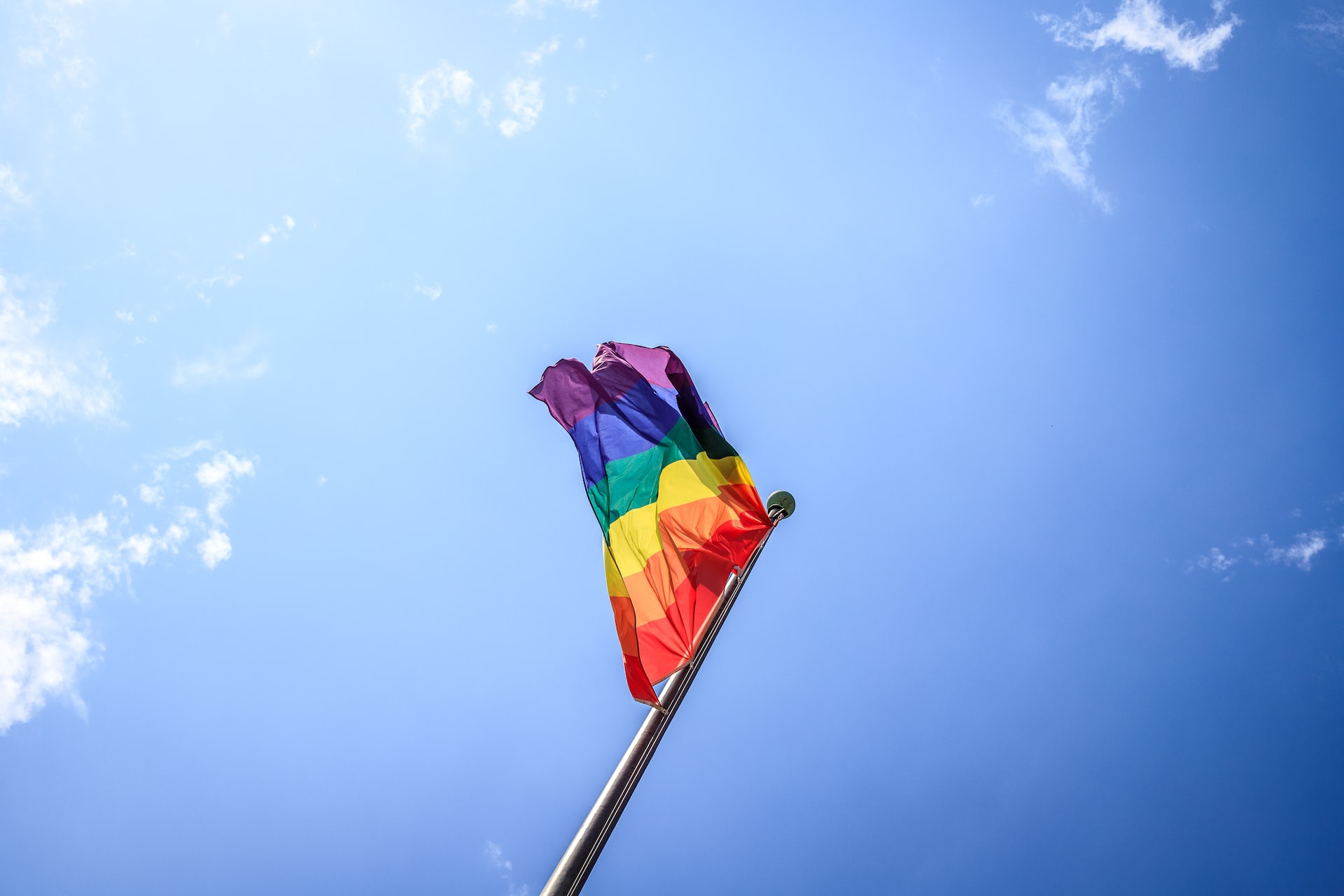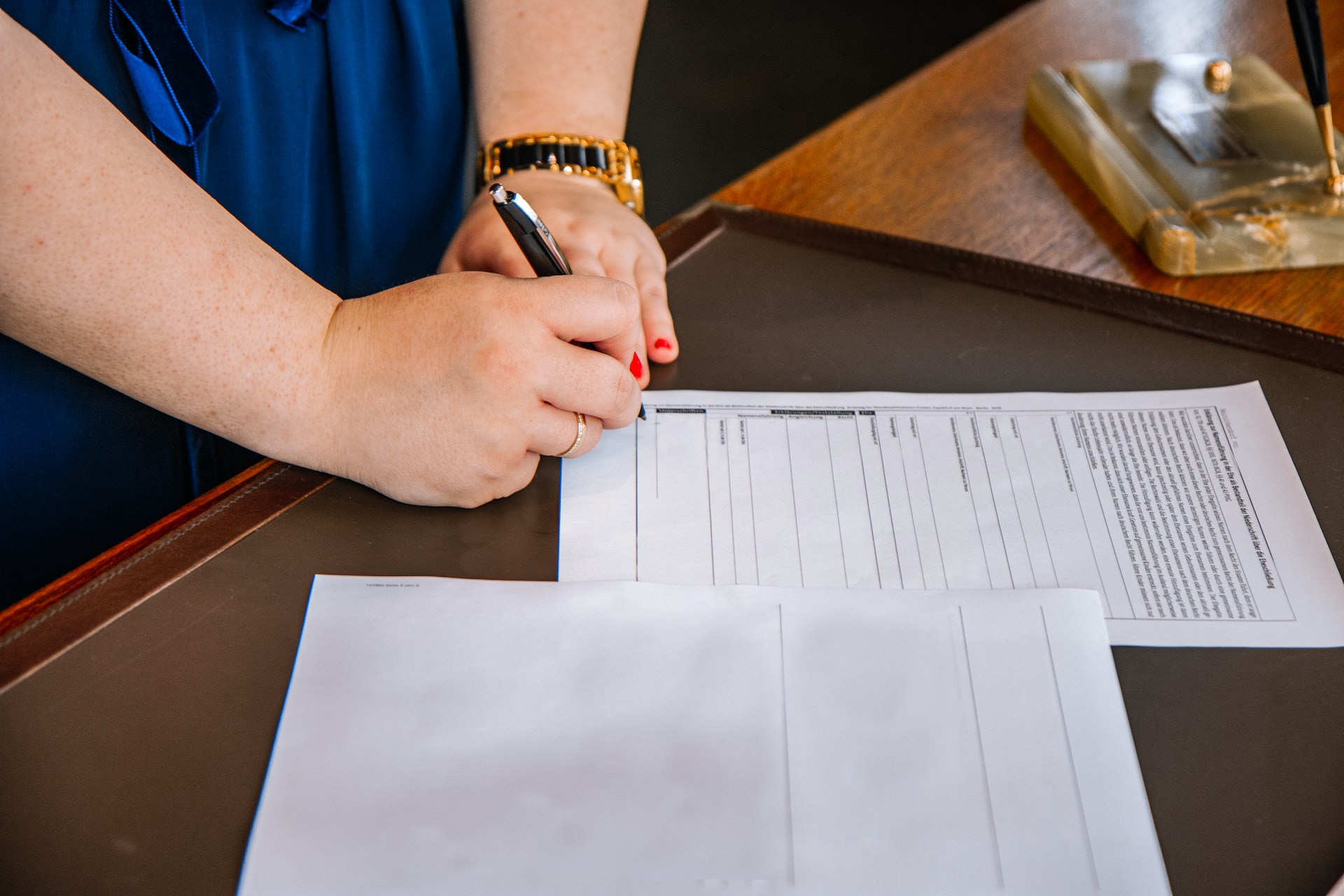The LGBTQ community is one of the most diverse and vibrant communities in the world. With representation across all walks of life, it can be a great place to find understanding, acceptance and support. But before you jump into this wonderful world, there are a few things you should know. Here are five key facts about the LGBTQ community that everyone should be aware of!
Introduction to LGBTQ
Sexual orientation and gender identity are important parts of self-identity, but often misunderstood. The term LGBTQ stands for Lesbian, Gay, Bisexual, Transgender, and Queer and is used to represent individuals who identify with or are perceived to fit into any of these identities. It is important to recognize the challenges that members of the LGBTQ community face and understand considerations that may be necessary when working with them. Here are five things you need to know about LGBTQ:
1. People usually begin to discover their sexual orientation during adolescence: Although some people may feel they have known their orientation since childhood, many people become aware of their same-sex attractions during adolescence. As people grow older and gain more life experiences in adulthood, they may feel as though their identities have shifted.
2. Gender identity is different from sexual orientation: Sexual orientation refers to attractions between members of the same sex or genders, but not necessarily how one identifies themselves in terms of gender (i.e., male or female). Transgender individuals identify as a different gender than the sex assigned to them at birth; this can include those whose gender identity is non-binary or fluid among multiple genders.
3. There are diverse expressions within the LGBTQ community: People who identify as Lesbiann(s) may use terms like dyke or bulldagger; Gay men may refer to themselves as queer; Bisexuals may opt for pansexual labels; Women who are attracted to other women sometimes refer to themselves as a Lezzy; Those who transition from female to male (F-to-M) use labels including transman and FTM while those transitioning from male-to-female (M-to-F) use labels such as transwoman and MTF; Queer is often used by anyone in the LGBTQ community who desires an all inclusive term no matter what particular subculture they may be part of; Nonbinary folks identify outside the two recognized binary genders (male/female).
4. People express themselves differently sexually: Not everyone has a static sexual identity Ñ some individuals experience change over time Ñ but most will express one primary preference throughout their lives even if it changes due to social pressure or increased comfort with varying relationships over time. Additionally, preferences vary widely among self identified gay persons Ñ some are more drawn intellectually while others prefer emotional connections before physical intimacy Ñ so itÕs important not make assumptions based on someoneÕs label alone as every individual will have different experiences and needs according their own identities & expressions around sexuality
5_The prevalence of discrimination against LGBTQ people should not be ignored: Unfortunately both public opinion polls & research studies indicate high levels of discrimination against members of this community from verbal attack & violence in schools & workplaces all too often accepted by lawmakers through enacting laws that provide legal sanctions& create an environment which makes difficult simply being one’s true self everyday . Allies can help combat this by speaking out against it whenever possible & treating everyone with respect regardless.
History of LGBTQ
The history of the LGBTQ movement stretches back centuries, with the earliest known exploration of same-sex relationships appearing in Greek and Roman texts from around 600 BCE. Throughout history, there have also been cases of cross-dressing performed for spiritual reasons as well as for entertainment purposes. However, it wasnÕt until the 19th century that self-identified LGBTQ individuals began to form community networks and advocate for societal acceptance and rights.
In 1864, German sex scientist Karl Heinrich Ulrichs wrote a series of pamphlets advocating for what he saw as the natural expression of love between people of all genders and sexualities. This was seen as a major milestone in this quest for acceptance and visibility within society.
In the mid-20th century, more gay bars opened around the world Ñ providing a safe space for those who identified differently within their communities to meet and form connections. In 1950, homosexual policy reform advocacy group ONE was founded in Los Angeles Ñ becoming one of the very few openly operating gay organizations at that time. The following year saw the publication of ÒThe 200 Years Behind UsÓ by academic Martin Duberman – offering a comprehensive look into American gay history from 1776 onwards.
In 1969 marked a huge turning point in history when New York police raided The Stonewall Inn bar Ñ leading to a series of spontaneous acts organized by activists like StormŽ DeLarverie and Marsha P. Johnson that became known as ÔThe Stonewall RiotÕ or “The Stonewall Uprising” widely accepted to be the start of significant wider public awareness campaigns concerning civil rights legislation favoring LGBTQ individuals within many countries all over the world. Following on from this event there were other initiatives such as 1970’s “Christopher Street Liberation Day Parade” which is now an annual tradition across many big cities from London to Paris being held over June every year helping drive worldwide attention towards these social issues like never before.
Today, LGBTQ rights are much better established through advocacy work such organizations like Lambda Legal or ILGA (the International LGBTI Association) fighting for justice all over the world despite still facing some hard battles ahead both domestically and often internationally too due to cultural or religious opposition with shining examples like Russia always standing out if only due to their country still making it illegal today with police even sometimes violently intervening at public events every now and then during major celebrations associated with it each year too despite some slow positive changes occurring elsewhere especially in Western Europe recently too following much hard earned political campaigning activity sometimes near nonstop over generations this is certainly an issue that affects many on a personal level worldwide even far too frequently still going into 2019!
LGBTQ Rights and Representation
In recent years, LGBTQ rights and representation have become more visible in society. It’s important to understand that LGBTQ individuals have been part of our society for centuries, and they deserve equal rights and respect. Here are five things you need to know about LGBTQ rights and representation:
1. Lesbian, Gay, Bisexual, Transgender, and Queer (LGBTQ+) individuals face discrimination in many aspects of their lives including the workplace, housing, health care, education and family life. Despite the progress made over the years with laws protecting LGBTQ+ individuals from discrimination based on sexuality or gender identity most states still do not provide comprehensive services or protection for this population.
2. LGBTQ+ people face a higher risk for physical and mental health issues due to stigma and lack of access to resources. Studies show that inadequate healthcare is a major factor preventing better health outcomes among people from this community as they often face barriers accessing services due to discriminatory policies or lack of available providers.
3. Gender is more a spectrum than just male or female Ð it exists outside social norms as well as traditional gender binaries accepted by many cultures around the world. Gender expression is a way for people of all gender identities to express their truest self through clothing choices and activities associated with different genders that conforms with an individualÕs internal sense of self-identity or gender identity Ð regardless of biological sex assigned at birth Ð it essentially means affirming oneÕs self through actions concerning external expressions such as dress behaviors etc
4. The term “sexual orientation” is used broadly to refer to a person’s emotional/romantic attractions towards another person; however there are numerous other terms related such as pansexuality (attraction towards all genders) aromanticism (lack of romantic attraction towards any person), being biromantic (attraction towards one’s same-gender & another), etcetera – these can be considered part of the larger umbrella known under LGTBQ+.
5. Representation matters when it comes to how members within the community are seen by their peers – media & entertainment can play an important role in creating safe spaces narratively & fostering understanding by narrating stories revolving around themes such portraying transformative experiences which may challenge binary gender norms & asking newer questions which are realigning with modern definitions/ interpretations concerning sexuality & fluidity in sexual orientations + identities This creates visibility in mainstream media which can eventually inform social policies around inclusion etc
LGBTQ Discrimination and Challenges
The LGBTQ (lesbian, gay, bisexual, transgender, and queer) community often faces discrimination and other challenges in society. This discrimination can manifest in many forms, ranging from verbal harassment to workplace inequality and even physical violence. Understanding the nature of these difficulties and the ways in which they are experienced by individual members of the LGBTQ community can help create a more inclusive world.
Discrimination against LGBTQ individuals is still prevalent throughout the United States Ñ and it often takes place in public places such as stores, restaurants or public transportation. Additionally, accessing resources or services such as healthcare can be a challenge for many within the LGBTQ population due to discrimination from providers or being denied access out of fear that their sexuality will be judged negatively. Similarly, some LGBTQ individuals have additional worries about safety when traveling due to hostile environments that may exist in certain parts of the country.
Beyond this personal-level discrimination, there are issues that arise at a legal level as well Ñ LGBTQ people are still not protected under federal non-discrimination laws unless they explicitly include sexual orientation or gender identity as protected categories within their provisions. This means that even after LGBT marriage became legal nationally, there are still recourse protections missing at a larger level that could protect those who experience such discrimination from employers and businesses alike.
It’s also important to recognize that there is not just one rallying cry for action when it comes to improving life for LGBTQ individuals different members of the community have different experiences and need different forms of support based on their unique situations. What this means is that an inclusive world won’t simply be created through large movements like legislation changes; it will also require listening to individual voices and doing our best to understand what people need in order to live authentically without fear of marginalization or mistreatment from others.
LGBTQ Inclusion in Society
The LGBTQ (Lesbian, Gay, Bisexual, Transgender and Queer/Questioning) community has made great strides in recent years towards achieving social acceptance and dignity. While there is still a lot of progress to be made around the world, there are several key facts to keep in mind when considering the social inclusion of the LGBTQ+ community.
Firstly, having laws that protect the rights of LGBTQ+ people is essential in creating an inclusive society. While many countries have enacted legislation that extends rights to this often-marginalized population Ð including marriage equality, gender identity protection and antidiscrimination policies Ðthere are still areas lagging behind. Understanding any gaps in legal protections can help inform decisions on how best to approach creating a more inclusive social environment.
Secondly, fostering an understanding within educational institutions will go a long way towards normalizing the LGBTQ+ community and their experience. By implementing curricula with LGBTQ+ topics like queer theory or gender studies in schools and universities both at home and abroad, it is possible to create an understanding amongst students about concepts such as gender identity or sexual orientation at an early age.
Thirdly, businesses have a strong role to play in actively promoting LGBTQ+ inclusion through their own policies and practices. This includes certain Òcorporate codes of conductÓ that address topics such as harassment or discrimination based on sexual orientation or gender identity; having diversity programs for recruiting staff; providing support services for those that identify as part of the LGBTIQA + community; encouraging diversity among customers; and offering opportunities for career progression regardless of sexuality or any other factor associated with difference or belonging to an “other group” compared with majority populations. Doing so can create strong incentives for staff to stay with companies while also inspiring them Ð through examples such as female CEOs speaking up on equal pay that they too can achieve their dreams regardless of who they are or what they look like – something all employers should be actively advocating for regardless of industry sector or geographical context.
Fourthly, media has traditionally helped shape public perceptions regarding various minorities including those belonging to minority cultural, religious or sexual identities Ð so it pays for media outlets to have a clear stance on inclusion and representation when it comes to this subject matter too. Ensuring news coverage reflects diverse opinions as well as positive role models from within these communities helps raise awareness around issues faced by LGBTIQA + individuals who now face both global recognition but also further stigmatization from some societies worldwide depending upon their country location- what characters appear on screen depicting issues that affect these groups need careful thought at all times if true representation is intended rather than stereotyping certain issues which may arise from certain original stories presented just adding to potential difficulties encountered by members themselves not helped by generalisations existing about these matters overseas unfortunately due t o lack o f transparency focusing o n only one part o f many complex stories affecting particular community members worldwide always case by case basis crucially rather than generalisations affecting many lives adversely depending on location environment sadly making it important overall listening local voices not just large organisations dealing directly at national level though aware topic highly emotive issue by nature . . .
Finally, civil society organizations must play both a defensive strategy defending hard-won rights but also engage proactively with proactive advocacy work regarding others lacking certain rights where needed still globally: such as openly addressing signs indicating potential discrimination against LGBTIQA + individuals seen particularly visibly during Pride Month globally due May-June each year perhaps most helpfully overall after all seeking proper enforcement guarantees relating fair treatment laws potentially allowing greater opportunities everywhere better understanding reached hopefully soon enlightened times nevertheless worldwide making dialogue vitally important alone already thanks !
LGBTQ Support Systems
The LGBTQ community has built a strong support system to help members feel safe and accepted. There are many resources available for LGBTQ individuals, such as support groups, health services and advocacy organizations.
Support groups can provide a sense of belonging and understanding for members of the LGBTQ community. These meetings can be conducted in-person or virtually, providing an opportunity to openly discuss issues related to sexuality or gender identity without fear of judgment or ridicule. Some local organizations may host programs specifically for youth or LGBTQ seniors Ñ Younger LGBT elders often experience higher rates of social isolation, depression and anxiety.
Humana also provides comprehensive health services designed specifically with the needs of the LGBTQ community in mind. These include confidential access to mental health providers dedicated to helping resolve challenges such as depression, living with HIV/AIDS and confronting questions surrounding gender identity development.
Finally, advocacy organizations are committed to advocating on behalf of the rights and interests of those in the LGBTQ community, working towards creating an equitable society where all individuals are empowered to live authentically and free from discrimination or exclusion. A few notable examples include GLAAD (Gay & Lesbian Alliance Against Defamation), The Human Rights Campaign and ƒlatŽ Networks Ñ each organization works collaboratively through public policy initiatives as well as educational materials and workshops geared towards fostering acceptance within our communities.
LGBTQ Resources
For many people, finding LGBTQ-affirming resources can be a daunting task. Fortunately, there are numerous organizations providing tools to help individuals find the support they need. From national nonprofits to local youth groups and crisis hotlines, these resources often provide knowledge and assistance through critical educational programs, crisis intervention supports, access to legal services and more.
Educational Resources: With the benefit of open dialogue comes access to important educational resources. Libraries are great sources for learning about the LGBTQ spectrum and social service agencies often offer free classes for parents looking for ways to support their children. The Human Rights Campaign offers a library of resources on topics such as parenting LGBTQ children as well as an online guide that compiles state laws impacting LGBTQ rights.
Crisis Hotlines: Many organizations offer toll-free hotline numbers or online chat services to provide help during times of emotional distress or crisis. It is important to remember these lines are confidential and they can be used by anyone no matter what gender identity or sexual orientation they identify as. Resources like The Trevor Project exist specifically for crisis intervention in the LGBTQ community with trained Crisis Counselors available 24 hours a day, seven days a week.
Legal Services: Accessing legal services is important for members of the LGBTQ community due to varying statewide legislation concerning rights such as protection from workplace discrimination or marriage equality laws. Organizations like Lambda Legal stand up for those facing discrimination due to actual or perceived sexual orientation and gender identity/expression. They take their mission one step further by also advocating policies at federal, state and local level that would protect basic civil rights on behalf of LGBT individuals everywhere making sure every person within this community has equal rights under the law no matter where they live or work in the country.
Youth Programs: Mental health is particularly pertinent issue among todayÕs younger generation so it is important that education on healthy relationships begin early in life with programs that ensure young adults understand what it means to belong in whichever way suits them best whether it’s identifying through genderqueer (nonbinary), lesbian, gay, bisexual or transgender spectrum there should be clear understandings around such labels from both school environments but also peers within those settings . National organizations such as GLSEN (Gay Lesbian & Straight Education Network) offer invaluable information about studentsÕ legal rights within public school systems as well free resources tailored specifically toward youths who seek representation and safety beyond what traditional education systems have outlined thus far .
LGBTQ Centers: Establishing partnerships with local LGBT centers makes obtaining accurate information easier as well as connecting citizens directly with professionals ready answer any questions whether meant living situationally within their queer identities or navigating through outside microaggressions while partaking daily activities such work; volunteerism; socializing; activism; etcetera meaning amplifying presence visibility effortless through simple networking processes between parties relevant all needs understanding representation being served here These centers also carry extensive listings events companies catering same communities further expanding presence increase real world presence inspire confidence acceptance lack individual feels isolated lacking open outlets represent collective voice society
Conclusion
When it comes to being an ally of the LGBTQ community, it is important to remember these five key points. Firstly, have patience and accept them for who they are even if you do not understand their identity. Secondly, don’t be afraid to ask questions, but be respectful in how you do so. Thirdly, avoid assuming a personÕs sexuality or gender identity, as this may offend them. Fourthly, don’t make assumptions about a person based on their LGBTQ status; everyone is unique and should be respected as such. And finally, remember that coming out can be a difficult and frightening experience; listen with empathy and support anyone who chooses to share this journey with you. We all have the same potential for love and happiness regardless of our labels or identity.






